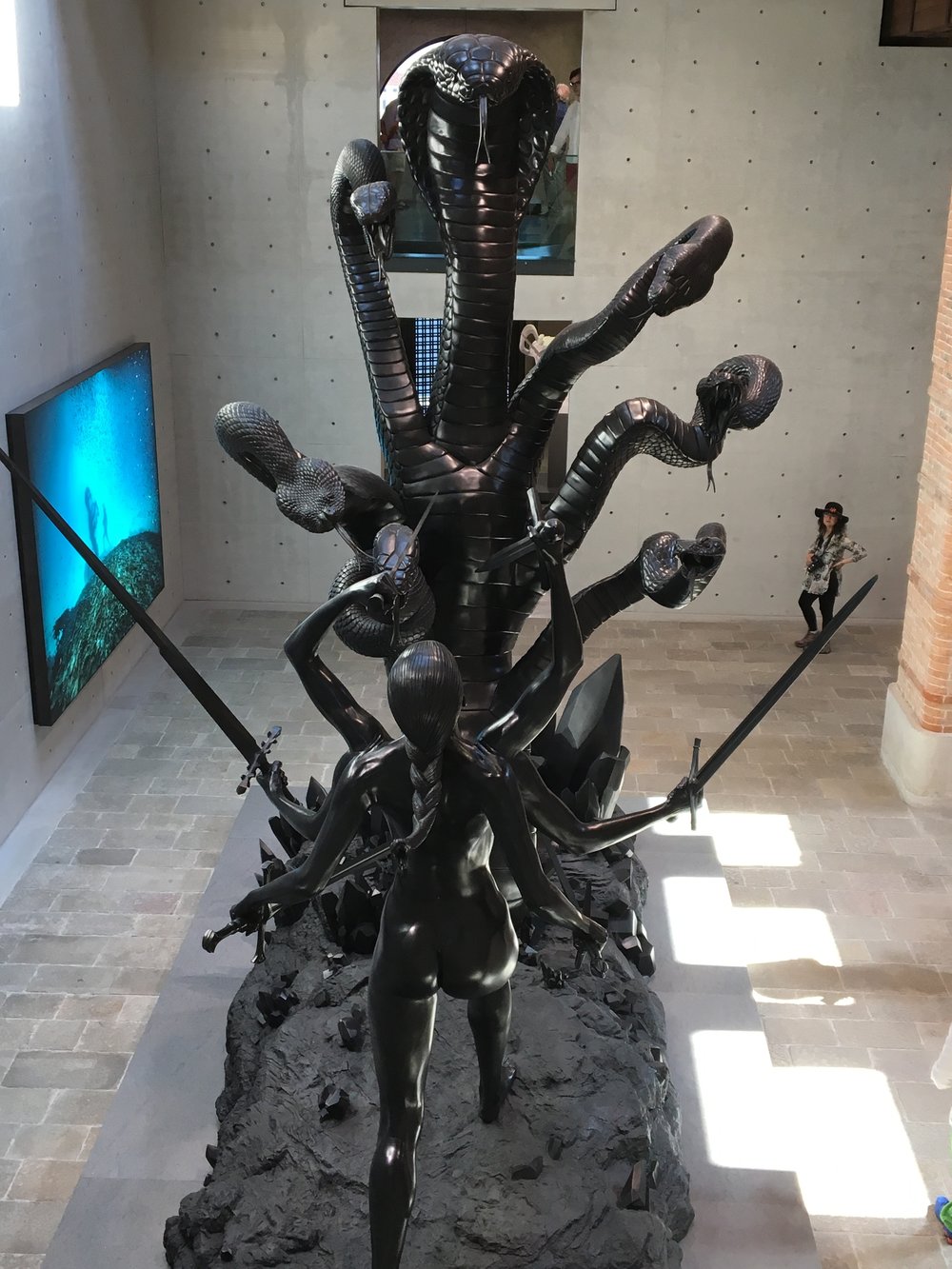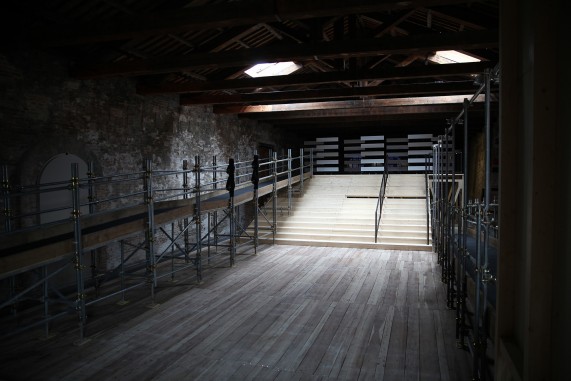On Gathering and Storms: Neto’s Piece in Context
November 16, 2017
by Ana Fernandez
As part of the Padiglione dei Sciamani, or Shamanic Pavilion at the Biennale’s Arsenale, Ernesto Neto’s installation is well ingrained into the theme of Viva Arte Viva, which gives a voice to the artist and provides a sort of eclectic new age vision of the world. Neto’s installation consists of a large hand-made crocheted tent, as described in the Biennale’s short guide: “a polyamide structure suspended from the beams of the ceiling. According to the Biennale Arte short guide, Neto adopts the form of the “Cupixawa,” a place of sociality, political meetings and spiritual ceremonies for the Huni Kuin Indians of the state of Acre in the Amazonian forest” where Shamans gathered to perform ceremonies that resemble in some way the traditional drinking of the powerful entheogen plant. Afterwards the tent was open for visitors to gather and pray, meditate, nap, rest, etc.
%252Bby%252BErnesto%252BNeto%252C%252B2017.jpeg)
While Ernesto Neto's piece is a wonderful place for gathering and relational aesthetics, the piece offers no mention to the people who help build it (except in a video that can be seen elsewhere), nor to the properties of the materials used. To complicate the matter, the use of the “Cupixawa” as a negotiable site for meditation/prayer/leisure and the allusion to the use of the ancestral plant Ayahuasca or “Nixe Pae” for ceremonies, becomes a palatable way to introduce an ancestral ritual to the western Biennale goers, with all the problematic assumptions that this could carry.
While artists of the center are using contemporary languages derived from the Western canon as a mise-en-scene of the peripheral world and its complex navigations, the indigenous artists of such world are continually ignored and their artistic manifestations considered of little or no interest. The concept of the artist as ethnographer and its consequent ventriloquist tendencies towards speaking for the other are set in question. Who is speaking in Ernesto Neto's piece? Is it appropriate to appropriate a profound ritual of ancestral origin and place it in the site of the object giving it a different use? Furthermore, is it pertinent to use the name and accoutrements of the ritual of the sacred medicine within a Biennial cultural construct?
I believe appropriation is a pertinent tool. However, I don’t believe in the pertinence of appropriating the Ayahuasca ritual and ceremony and transposing it into an art biennial context, because there is an element of ventriloquism where the own voice of the indigenous, the plant and the vitality of the Cupixawa get objectified and devoid of its function as ritualistic vehicles. Aware as I am that the piece attempts to bring the world together to meditate and embrace in fraternal peace, for an object to retain its ritualistic power it must remain within the territory of the ritual. Its extraction from said territory strips it off the functional qualities of its "thingness" which would be to be a site for the ceremonial use of the sacred plant Ayahuasca.

In any case, in a moment in which only murmurs and liminal spaces exist – perhaps best captioned via the opening phrase of Damien Hirst’s recent Venice exhibition, “Between lies and truth, lies truth” – we must ask ourselves those famous Foucauldian questions:
What are the modes of existence of this discourse? Where has it been used, where can it circulate and who can appropriate it for himself? What are the places in it where there is room for possible subjects? Who can assume those various subject-functions? And behind those questions we would hear hardly but the stirring of an indifference: ‘What difference does it make who is speaking?
’-Michel Foucault, What is an Author?
It is pertinent to ask: what difference does it make?
I was embedded in this questionings when suddenly a storm hit Venice, the Arsenale, and the sites of the Biennale. As I heard windows banging and rain pouring, I sought refuge in a wooden architectural staging of sorts, something between a stadium and a theater, hidden among all the installations, grandiose but dimly lit. I went around and sat in the stairs, writing my thoughts in a small blank book. Soon, many other people had come and quietly sat in that liminal space that furnished comfort in a moment of uncertainty. As I learned later, it was an installation by Turkish artist Cevdet Erek. The space was humble although of great scale, the materials of wood and sound; the people traversing and inhabiting it completed the piece. Contrary to Neto’s installation with a prescribed sense of the ceremonial and ritual, this was a contemporary space of gathering where nothing was requested from the participant, ambiguous and open. Erek’s work contributed peace within and seclusion from the unpredictability of natural forces.

